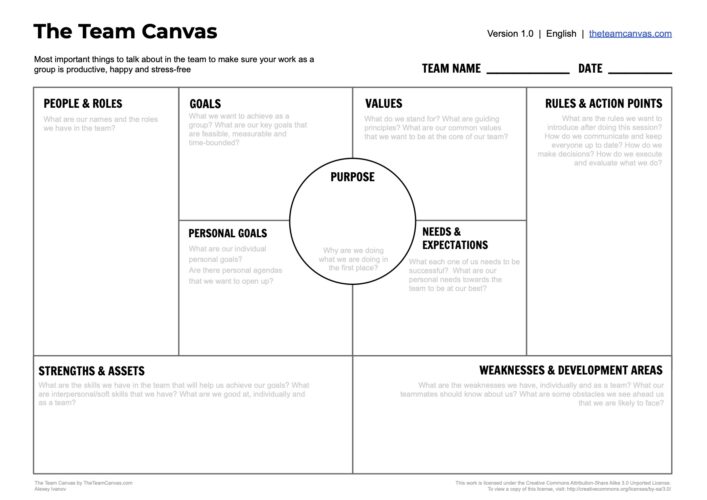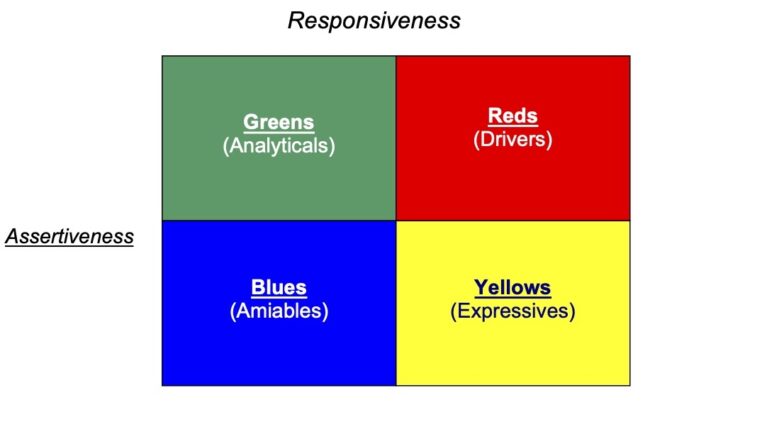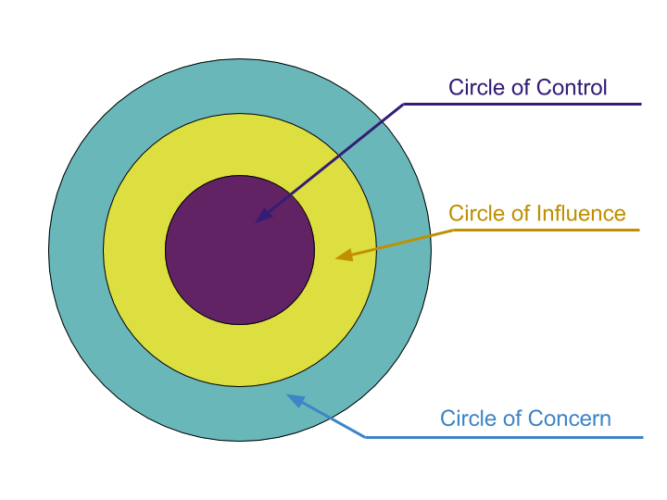Despite our increasing reliance on email, messaging, and other digital channels for comms, conversations between people at work are still integral to getting anything done.
But despite how much time we spend in meetings, how many plans we make, or how many structures we put in place, it can still be really hard to make anything happen – largely because interactions between people are time-consuming and prone to misunderstandings.
For example, we’ve all been in meetings that take an hour and a half, and at the end leave us feeling it was a total waste of time: you didn’t get anything out of it, didn’t contribute anything, and didn’t feel heard, but still you had to be there.
While conversation persists as the best tool you have to reach a common understanding, the challenge is how to convey meaning and reach a meeting of minds on what you’re doing and how you’re going to get there, in such a way that you all listen carefully to each other, understand the problem, and reach accord.
When so much depends on conversations, and when everyone interprets things differently, here are four tools we recommend to help.
The reason we like them is that they’re all frameworks for the right kinds of conversations.
1. Team Canvas

Getting team members to click can take time. It requires shared values, complementary skills, and mutual trust. Team Canvas can help accelerate the process and sets a framework for a structured conversation that’s designed to bring everyone onto the same page. (Literally, because it’s done on a big sheet of paper.)
There are two versions:
1. Team Canvas Basic is designed to help team members kick off projects and align on common vision. It lets people learn about each other and accumulate enough momentum to get going.
2. Team Canvas is slightly more sophisticated. It is designed to align teams, increase cohesion and performance, and to create a productive team culture, fast.
How to do it
The canvases are pretty straightforward and self-explanatory.
Print one off as large as you can – there are notes on the canvases that explain each area to fill in, team members write their thoughts on post-it notes and stick them onto the canvas, then you all have a conversation about what’s going on.
NB It’s not about filling in all the boxes, it’s about making sure you’re having the conversations.
What you can learn
Team Canvas is a brilliant tool, put together by some really smart people, and can help you align and get unstuck, by answering these questions together:
- What are the things that we value?
- What are our roles?
- What are the outputs that we want from this?
- What does complete look like?
These are the kinds of questions that we often make assumptions about when working with groups of people.
Why we like it
We often use Team Canvas as part of management or team building programmes as a way of showing a group how to frame a conversation.
It’s very accessible: we can explain it to the group quickly and invite everyone to go practise it and talk about what happened next time.
They always come back and say, “it was really helpful, and everyone got an opportunity to say what they think, and we cleared up a whole bunch of stuff that was actually not that clear.”
Why it’s good for managers
- It’s clear and easy to follow
- It’s very straightforward to apply
- It’s beautifully democratic
- It leads to great conversations.
Team Canvas Example
I’ve been working with a client who had a new colleague.
My client already had a boss, but the new colleague was also acting like their boss. My client wasn’t sure what was going on and was confused about responsibilities.
It was taking up enormous amounts of her emotional energy. She was struggling to communicate with her new colleague, she was deeply resentful, she was framing everything that was being said in a negative way.
Finally, she had a conversation with her actual boss – using the Team Canvas framework. In the process it came out that her boss had asked her new colleague to look at everything, “they have absolute licence from me to understand everything, but I didn’t realise they would be so thorough,” her boss said.
“I should’ve explained what was happening to you. It’s really clear to me that you need to work closely with them.”
It completely changed my client’s perception – she still had some work to do, but the resentment went away.
Having a conversation about roles is one of the things a Team Canvas does that can be really effective.
It’s also good, for example, for helping with ethical problems within organisations, because you can have a conversation about what you’re going to do and what you’re not going to do.
2. Expressive Drivers

The Expressive Drivers tool is based on the work of psychologist David Merrill, who identified two scales of communication: assertiveness and responsiveness.
Assertiveness: In work interactions, you always need things from others. In making your requests you may be highly assertive or you may make requests at a lower, even passive level.
Responsiveness: Whilst assertiveness has to do with communicating to others, responsiveness is about how you respond to requests or demands from others.
This results in a model that has four quadrants which identify four social styles: Analyticals, Drivers, Amiables, Expressives.
Based on this, Expressive Drivers is a very simple profiling tool that gives you a colour to indicate your communication style.
As a model it is effective without being overly scientific or pretending it’s the truth – it’s all about focusing you on your interactions.
How to do it
Expressive Drivers has a simple quiz that you can do with your team or a group of people, to help you talk about your communication preferences.
It’s akin to a super-light Myers Briggs – you can do it really quickly, and it only takes about 5 minutes to tot up the scores.
Download an Expressive Drivers worksheet here.
What you can learn
Expressive Drivers helps you be more aware of how others see you, and how you see them.
It gives you a simple framework for thinking about how you might respond differently in a given situation.
It gives you a choice between an unconscious habitual response and more conscious alternatives.
It can help you understand why you communicate well with some people and not so well with others. It’s also a good way to get to know people better.
Remember, it is only a model. It is not the whole truth, but it does get you thinking.
Why it’s good for managers
Because it’s so simple, Expressive Drivers removes confrontation and turns the serious subtext of ‘we don’t talk to each other enough’ into a game.
It enables you to talk with your team about how difficult it is to have a conversation, the assumptions you make about each other, how you’re irritating each other and how “that’s understandable because your preference is one particular style, while mine is another.” If you know that then maybe you can find a way of giving each other something without it being irritating.
In a team setting, it’s fun and playful and gives you an easy framework for understanding that you have options around changing the way you communicate.
Expressive Drivers Example
We used the Expressive Drivers tool recently with a group who had communication issues.
Their organisation had just been restructured. A couple of people had moved up: where they were three in the team, they were now five, soon to be seven. The two new people were in the room but didn’t know anyone, and the team didn’t know them.
We used the tool as it was and even though it was a sophisticated group – they all knew their Myers Briggs types – it was really helpful to be able to frame their interactions in a lighthearted way without pointing fingers or blaming anyone, and recognising that they were all part of the dynamic.
We also plotted the distribution of their personality types on a chart.
What we noticed was that the leader of the team had one attribute that was absolutely outlying compared to everybody else – which partly explained why they were having clashes – because no one was speaking the same language or responding to their concerns.
It turned out that one of the new people was a really good fit for the manager – an ally, someone who understood their frustrations and concerns.
So that was good.
3. Planning Poker

Planning Poker is a quick and dirty tool for helping a group to reach agreement, especially if you can’t agree on something. It’s also fun.
It’s brilliant in a design or brainstorming meeting. It’s a great way to say things that are uncomfortable to say, and a great way to include people who feel uncomfortable to speak.
It removes all kinds of power or preference or styles that you may have.
There’s also a playfulness to it.
We got it from Brighton agency, Clearleft who use it for making decisions, to good effect I might add.
How to do it
Around the table, when you’re trying to reach a decision on a subject, everyone writes down their recommendation or concern, secretly on a card, then flips over their cards at the same time.
If what’s written on the cards are all the same, then great, you can proceed without further discussion. If anyone’s is wildly different, then you’ve got something to discuss.
For example: “What shall we charge for this project?”
You ask everyone to write down what they think on their card… then say, “1, 2, 3… flip it over.”
If, for example, three of you have the same answer, while one person’s is wildly different. You can discuss why.
This can prompt a great conversation.
Another example: “How long should a new project take?”
If everyone’s put six weeks, and one person’s put four months, then you can explore the reasons why. And through the exploration, you might realise it’s going to be three months. Not four months or six weeks.
What you can learn
Planning Poker is a really good way of making sure that different opinions get heard.
Otherwise, the person who thinks it’s going to be four months may just have kept quiet. In reality, you need to know why they think it’s four months ie it’s great for bringing in all the voices. Or for saying the unsayable.
Why it’s good for managers
Planning Poker shows trust. And is a way of bringing conflict out in a playful way.
Planning Poker Example
We’ve been working with a leadership team who’s CEO is taking a sabbatical. The rest of the team are going to run the business without them for a while.
Early on in this process, we hold a workshop about how the leadership team are going to have to operate, what might be expected of them, and what they’re concerned about.
Over lunch, I ask, “As a matter of interest, where do you all see yourselves in two years’ time?” I’m thinking that one or more of them might want to apply for the job of running the business. It’d be good to know that.
I gave them all a card and say, “Write down where you’ll be in two years’ time,” they count to three, flip their cards over, and they had all written… “Not working here!”
Their boss is leaving and they all want to leave too. That was interesting!
It was unexpected but really helpful to know. The conversation then became about keeping an even course and succession planning, and the implications of that: will they be recruiting, or filling the role internally?
And what experience does each team member need, to make sure they can get the next job they want?
Now that they’re all really clear about their motivations – that’s going to help them do this in a way that’s much more collaborative. Because they know where they stand.
4. Circles of Influence

Circles of Influence is a tool created by Stephen Covey. He designed it to help you look at your concerns so that you realise you have more power than you think over things that feel out of your control.
Circles of Influence is a great way to have conversations with your team as it helps people take responsibility, and thus be more proactive, productive and happier.
How to do it
(For a full description of how Circles of Influence works see here.)
- On a large sheet of paper, draw a big Circle of Concern.
- Ask your team to write their concerns on sticky notes, and put them in the circle.
- When they’re done, draw another smaller circle in the middle of the first circle, this is the Circle of Control. These are the things they can control.
- In conversation, move all the sticky notes in the Circle of Concern that they can actively control, into the middle Circle of Control.
- People usually feel there aren’t many items that they can actively control.
- So, draw another circle in between the first two – between the circles of Concern and Control. This is the Circle of Influence.
- Get team members to look at the ways they could influence some of the things that are out of their control.
- Go through all the notes that are in the Circle of Concern and together try to move them into the Circle of Influence.
- When you explore these further, if you think about them differently, you’ll find that some of the concerns can go straight into the Circle of Control. You may also discover solutions and suggestions in the group.
What you can learn
Circles of Influence is really good for building the rapport of a team, and it’s also a great tool for building resilience. You can use it to question all of the things where someone feels out of control, and see if they can have more agency.
And it gets away from just focussing on conversations about the mechanics of the work, to the experience of doing the work, and the culture, and how you might be unconsciously creating problems for yourself and your colleagues.
Why it’s good for managers
When people realise they can influence more than they think, they can change their attitude and their response to the things that feel out of their control. Even the act of acknowledging this creates some relief.
In a team, you’re trying to get to a point where team members feel confident enough to be able to talk about the things they’re frightened of and neutralise those fears. This helps them be more productive.
Doing that as a group means you really get to know each other better, building empathy about what concerns you and where your stress comes from. Solving those problems together helps that too.
People are not naturally drawn to these conversations, tools like Circles of Influence make it easier to talk about them.
Circles of Influence Example
We’ve been working with a team who were supporting their executive director.
The director was under a lot of pressure, and because of that, sometimes they were curt and aggressive, which created a dynamic of fear in the team.
Plus no one in the team had a good grasp of what was expected of them. And because they were frightened by the grumpy boss, they had retreated from leaning into the uncertainty of their roles, which was just not helping.
So we used the Circles of Influence tool to talk about all the blocks the team were experiencing, and then have a conversation about what was in their control and what wasn’t.
Together we mapped out all the things they didn’t know, all the stuff that they wanted absolute certainty and clarity on, which wasn’t possible.
Then we began the conversation: how could you influence this if you can’t control it?
What resulted were really useful insights into how they could stop thinking about everything as being handed down from the director, and start thinking that they were all part of one really big and complicated job, that required all four of them to do it.
There could be a huge amount of fluidity around who was doing what, but the important thing was that the person who was taking the heat – the director – was prepared, and their job was to prepare her.
So instead of waiting for instructions, they could be working out what was needed: for example to let people down if they were not going to get face time, and to make sure that the right things were prepared to the right standard, at the right time.
We ended up segmenting and slicing the team’s roles differently, into things that were blocked, and where they were looking for direction.
If they thought about their job as getting the right person in the right place at the right time, in this area, this area, and this area, they could think about how they were breaking the role up, and who might have responsibility for it.
The Circles of Influence tool created a lot of clarity around role expectation and it also moved them from feeling like they were victims and powerless, to recognising that actually they had a lot of agency.

Photo by Nik MacMillan on Unsplash
In Conclusion
All these tools are frameworks that help groups of people talk about the right kinds of things. They’re like scaffolding for a conversation – because you can’t take it for granted that you’re brilliant at it.
If you need some help with working on this – get in touch, at Then Somehow we help you build emotional literacy, increase empathy, and help you see the world differently, giving you practical tools to shift the stuff that’s stuck.
If you’d like to discuss how we can help your leadership team perform better, get in touch here.
